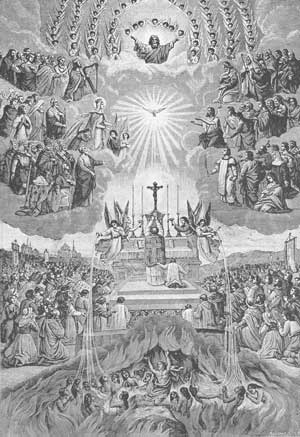
The Requiem Mass
by Aaron Green
The Requiem Mass, a mass honoring the deceased, is usually sung on the day of burial, the following anniversaries, and on the third, seventh and 30th days following interment.
The Requiem Mass consists of (but may not include):
Requiem Aeternam (Introit)
Kyrie Eleison
Lacrimosa
Dies Irae
Domine Jesu (Offertorium)
Sanctus
Benedictus
Pie Jesu
Agnus Dei
Lux Aeternum
Libera Me
In Paradisum
History of the Requiem Mass
Medieval Period
The earliest known practice of honoring the dead in the celebration of the Eucharist dates back to the late 2nd century as it was referred to in the texts of Acta Johannis and Martyrium Polycarp, however, the earliest surviving musical examples only date back to the 10th century.
Between the 10th and 14th centuries the chants flourished leaving us today with 105+ surviving Requiem chants. A chant is non-rhythmic monophonic melody. The large variety of Requiem chants is a result of regional differences and the reusing of previous chant melodies.
Renaissance Period
The Requiem flourished during the Renaissance period, despite during the 14th century when the Roman church limited the amount of times the Requiem was performed and of what chants it consisted. It was cut even further by the Council of Trent between 1545 and 1563. The Requiem did not evolve into a polyphonic setting until the Age of Enlightenment, likely due in part that the sadness of death should not be celebrated by the use of harmony. Personally, I think the use of harmony in the Requiem was genius; after listening to Mozart and Verdi, there is so much more feeling that can be conveyed. The variations between Requiems are drastic among the early works. The styles are impressive for their time; their simple melodies are played side by side sophisticated complex harmonies. It wasn’t until later when the variations subsided - an underlying theme began to take shape. The use of tenor cantus firmi became common in the Requiem as well as richer, fuller harmonization. Although the musical styles became more similar, the texts used did not. There is no textual consistency among the works, which is still a mystery among musicologists today.
Baroque, Classical and Romantic Periods
During the 17th century, notably because of the major opera composers of the time, the individual movements became longer and more complex. The orchestration became richer harmonically, rhythmically, and dynamically. Solo and choral voice parts became more elaborate – more operatic. Mozart’s Requiem, K.626, is the most influential contribution to the genre of the 18th century, despite the debates of its exact origin. It “set the bar” so to speak. Verdi’s and Berlioz’ Requiems are famous for the use of the text and the large scale orchestration respectively. Brahms’ German Requiem is non-liturgical. Stylistically, it is the same, but the text he composed himself from the Lutheran Bible.
20th Century
True to the period, the Requiem ceases to abide by the rules laid forth by its past. It’s not uncommon to see composers reincorporate the use of plain chant and revert back to a more simple sound. Composers treated the texts differently by keeping them fragmented while making use of instrumental techniques. Other composers included secular poetry, while some almost completely cut out the text altogether. Requiems were being written not just for individuals, but for humanity as a whole. John Foulds’s World Requiem (1919–21) and Benjamin Britten's War Requiem (1961) were written for World War I and II respectively.

2 comments:
You forgot to mention the decimation of the Requiem Mass in post-conciliar times!
That is for my other blog. This one has a very specific purpose.
;)
Pax tecum.
Post a Comment